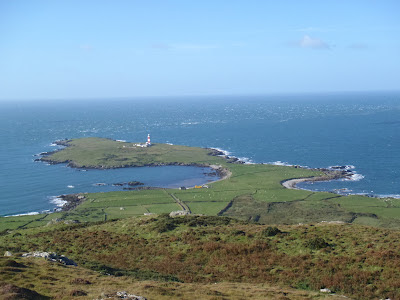Since I first started the
Wild Barley blog I have been writing about my adventures and experiences with
the natural world. But today I want to post something different. Have you heard
the story of Morgan the orca?
In June 2010 a lone, young female
orca was captured from the Wadden Sea,
off the northwest coast of the Netherlands under a rehabilitation and release permit. She was
emaciated and dehydrated. The dolphinarium which took in the whale in order to
administer this medical care named her Morgan. They weren’t allowed to display
her to the public and she was to be prepared for reintroduction into the wild.
This never happened.
 |
| Morgan © Free Morgan Foundation |
Within two months she was on
public display, and naturally she was popular. She brought in the big bucks.
She was also valuable to other dolphinariums in terms of her genetics.
Based on DNA and her
distinct vocalisations researchers are confident that Morgan belongs to a
Norwegian population of orcas. She would certainly provide a new blood line to
the captive orca population.
Despite a viable release
plan a judge in the Netherlands ruled that Morgan should go to Loro Parque in
Teneriefe. It is here that she now languishes, in a small, blue, featureless
tank, harassed and bullied by the other orcas at the park, and being trained to
perform for public display.
How can this have happened?
How did we get from helping a young whale in distress, taking her in with the
intention of help and then condemning her to a life of captivity? They were
supposed to be helping. The answer is of course, money. Hearing Morgan’s story
has made me so angry, not only for what has happened but also at myself for not
knowing it was happening.
I feel like I have been
slumbering for the last two years and all of a sudden I am wide awake, jolted
by a bucket of ice-cold realisation of what has happened here. The story of
Morgan has been in the back of my sub consciousness. A name I have heard in the
past almost banded around with the names of other captive orca. For some reason
today I wanted to find out more and what I found distresses and infuriates me.
We were supposed to be helping this whale, now she is a prisoner.
 |
Is this how Morgan is destined to spend the rest of her life?
A life that will be cut short by being kept in captivity.
© Free Morgan Foundation
|
Releasing an orca back into
the wild can be done. Although Keiko was never fully integrated into a wild
population, for five years he was free, he swam where he wanted and interacted
with wild orca. Then there is Springer, like Morgan she was found alone in an
emaciated condition, miles from where her family live. After being kept in a
sea pen and nursed back to health, Springer was ultimately released where she
successfully reintegrated with a resident pod off British Columbia, Canada. Just this field season Springer has been seen,
alive and thriving, 10 years after her release.
Of course there are
differences, Keiko was a captive for more than 20 years and scientists did not
know where his family were when he was reintroduced. The individuals and family
ties of Springer’s population were and are very well known to researchers. In
Morgan’s case researchers have now identified the population Morgan is likely
to have come from and have even identified members of her close or extended
family.
 |
© Free Morgan Foundation
|
In May 2012 Loro Parque
announced that there was a good chance that Morgan is, at least partially deaf.
How ironic when the next court hearing for Morgan’s case is looming on 1st
November. However despite having more than a year Loro Parque have not
conducted any of the scientific tests that would prove or disprove whether
Morgan is deaf. Leaving the question unanswered simply puts the seed of doubt
into people’s minds as to whether Morgan should be freed. The answer is she should.
There are so many issues
with keeping such wide ranging, highly intelligent, social animals in
captivity, and with purposely targeting wild animals for capture. What disturb
and angers me the most about Morgans story is the fact that she was captured to
rehabilitate, to nurse with the intention of returning her to the wild. What
gives these people the right to break that promise?
Morgan deserves her chance
to be wild.
What do we do? Stand quietly
back and watch another wild whale slowly decline in a stone cold tank? No. We
have to stand up and say No. This is not right. Greed like this cannot win.
Morgan must be freed.
The Free Morgan Foundation
is a not-for-profit charity raising awareness and the funds needed to pay the
lawyer fees, court fees and other costs associated with the fight to free
Morgan.
Morgan’s next court case is
on 1st November 2012. Sign the petitions, write letters and add your voice to others who are
taking a stand for her.
Finally tell the world.
Twitter, Facebook, word of mouth. Tell everyone and anyone about Morgan and get
them too to make a stand.
 |
© Free Morgan Foundation
|

















